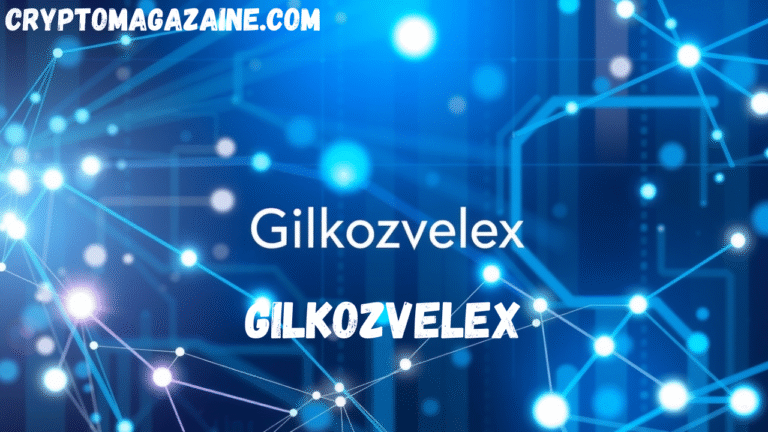SOA OS23 represents one of the most advanced frameworks in the field of service oriented architecture bringing together the flexibility of modular systems and the intelligence of modern computing models. It is designed to unify multiple digital services under one connected framework allowing organizations to manage applications with improved scalability and efficiency. The system stands as an essential component for enterprises that depend on multi platform operations and need seamless communication between distributed services. SOA OS23 promotes integration without complexity ensuring that data can travel across systems smoothly while maintaining accuracy and speed.
In the second sense the importance of SOA OS23 lies in how it supports the digital transformation journey of businesses worldwide. It combines the stability of traditional SOA with innovations found in microservices and cloud technology which results in a more adaptive and intelligent service platform. By allowing service reuse and dynamic orchestration the framework helps companies reduce time and cost while maintaining reliability. Thus SOA OS23 is not just a framework but a structural philosophy for modern service connectivity.
Architecture of SOA OS23

The architecture of SOA OS23 follows a layered approach that divides system functions into manageable and reusable components. Each layer performs a specific role ensuring smooth communication between services without direct dependency. The first pair of layers includes the service provider and consumer relationship where providers deliver services and consumers request them through standardized protocols. This separation enhances independence and allows flexible modification without disturbing the entire structure.
The second pair involves the service registry and orchestration mechanisms which are key to maintaining order in large distributed systems. Through intelligent service discovery and management SOA OS23 ensures that each service can locate and communicate with others automatically. This makes the architecture not only powerful but also self organizing as it adapts to dynamic network changes without requiring manual intervention.
Core Features and Capabilities
SOA OS23 introduces advanced features that make it stand apart from previous service oriented frameworks. The most significant among them is its adaptive middleware which enables efficient communication between diverse technologies. This middleware acts as a bridge that harmonizes protocols data formats and network standards across different systems. It allows both new and legacy software to coexist and function without conflict.
Another powerful capability of SOA OS23 is its real time service monitoring and dynamic load management. The system can analyze performance in live operations and adjust resources automatically to maintain balance. It also integrates security layers within each service interaction ensuring safe data transmission without slowing down operations. These combined features make SOA OS23 both intelligent and dependable in any enterprise environment.
Performance Optimization
Performance has always been a critical aspect of service architecture and SOA OS23 makes significant strides in this field. The system utilizes intelligent caching algorithms that minimize repetitive data access and reduce latency. By distributing workloads evenly across available resources it maintains high throughput even during heavy traffic. This makes it suitable for industries that require instant response such as finance and telecommunications.
The second performance advantage is its asynchronous communication model that supports parallel processing and rapid data flow. Instead of waiting for each transaction to complete the system processes multiple requests simultaneously leading to faster execution. These enhancements collectively improve efficiency and stability giving users the assurance of consistent uptime and better operational output.
Integration and Interoperability
One of the defining strengths of SOA OS23 is its seamless integration with multiple platforms and applications. Businesses today operate on diverse technology stacks that include cloud systems IoT devices and AI platforms. SOA OS23 bridges all these components under a unified service model ensuring compatibility without rewriting existing code. Its flexible API support enables smooth interaction between programming languages like Java Python and .NET.
The other part of integration strength lies in its ability to connect legacy systems with new digital frameworks. Many organizations still rely on older databases and operational software and SOA OS23 provides a communication layer that keeps these systems relevant. It converts legacy data formats into usable information for modern tools thereby extending the value of previous investments while promoting innovation.
Security and Data Protection

Security remains central to the foundation of SOA OS23 and its approach goes beyond traditional access control methods. The framework employs token based authentication models and secure encryption standards to protect service communications from unauthorized access. Each request and response is verified at multiple stages ensuring no vulnerability can exploit the network.
Additionally SOA OS23 includes continuous monitoring tools that track every service interaction in real time. This feature helps detect irregular activity early and responds automatically to potential threats. The inclusion of self healing protocols allows systems to recover from disruptions without manual restart or downtime. Such features make SOA OS23 a safe and reliable choice for enterprises handling confidential data.
Industry Use Cases
The implementation of SOA OS23 has expanded across numerous sectors due to its versatility. In the healthcare industry it supports integration between hospitals insurance providers and patient management systems creating a connected health environment. In finance it allows instant communication between banks payment systems and fraud detection platforms enhancing both speed and trust. These industries benefit greatly from the stability and intelligence built into SOA OS23.
Manufacturing and logistics have also adopted SOA OS23 to synchronize data between production lines inventory systems and suppliers. The system’s automation and service coordination ensure that information moves smoothly across departments improving decision making and productivity. This cross industry adaptability demonstrates the universal relevance of SOA OS23 in digital transformation strategies.
Benefits and Organizational Impact
The advantages of adopting SOA OS23 extend beyond technical improvement to overall organizational growth. Its modular design allows enterprises to upgrade services individually instead of rebuilding entire systems. This reduces downtime and enhances flexibility in responding to market demands. The framework also supports distributed management enabling teams across different locations to collaborate effortlessly.
On the operational side the efficiency of SOA OS23 leads to lower maintenance costs and faster deployment cycles. It promotes service reuse which not only saves time but also strengthens consistency across applications. Organizations that implement SOA OS23 often report enhanced agility improved user experience and greater return on investment in their digital infrastructure.
Challenges and Future Directions

Although SOA OS23 offers many advantages it also faces challenges that continue to evolve with technology. The complexity of managing numerous interconnected services requires skilled administration and proper governance. As organizations scale their infrastructure they must ensure that performance remains stable and security uncompromised. Training and adaptation can also take time especially for teams transitioning from older systems.
Looking forward the development community expects future versions of SOA OS23 to include even greater automation through artificial intelligence and machine learning. These technologies will enable predictive maintenance and self optimization features making the framework more autonomous. The next generation of SOA OS23 may also deepen its integration with quantum and edge computing environments expanding its reach into new technological frontiers.
Conclusion
In conclusion SOA OS23 stands as a milestone in the evolution of service oriented architecture combining the dependability of structured systems with the flexibility required in modern computing. Its comprehensive design supports interoperability automation and long term scalability making it an essential foundation for any enterprise pursuing digital excellence. The strength of SOA OS23 lies in its ability to adapt evolve and support the next wave of connected technologies.
Frequently asked questions about SOA OS23 often relate to its uses and future potential. It is primarily used for connecting distributed services and managing them efficiently across platforms. Its performance improvements stem from advanced load balancing and asynchronous processing. The architecture supports both cloud and hybrid environments making it suitable for modern infrastructure. Industries such as finance healthcare and manufacturing gain significant benefits from its deployment. The future of SOA OS23 promises even greater intelligence through AI driven orchestration and advanced self healing systems ensuring its relevance for many years to come.
Read More: Traceloans The Future of Digital Lending and Financial Empowerment






